Checking in with Nicole Tadgell and…
Warming Up with Lucky Beans
 March 3rd, 2010 by jules
March 3rd, 2010 by jules
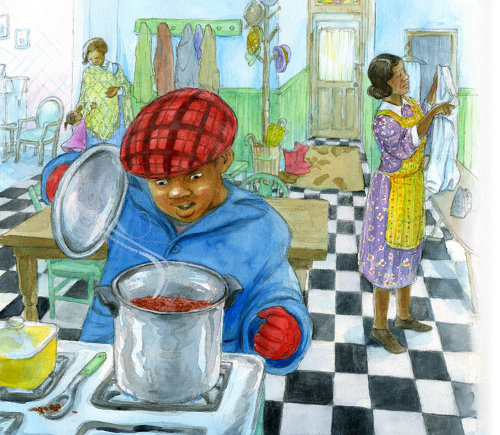
It’s cold these days. I’ll take some of the hot beans pictured here.
Illustrator Nicole Tadgell visited 7-Imp in October of ’08, and I figured now would be a good time to catch up with her and see what she’s been up to. And that’s because I knew for a fact that what she’s been up to is illustrating author Becky Birtha’s second picture book, Lucky Beans, released by Albert Whitman & Company this month. And I’ve read Lucky Beans, and I like it. (And if I were a math teacher for late-elementary students—or even a social studies teacher—I’d be all about using it in the classroom.) Nicole’s here to share some art and sketches, as well as talk a bit about illustrating the book. Here’s the sketch for the illustration opening this post:
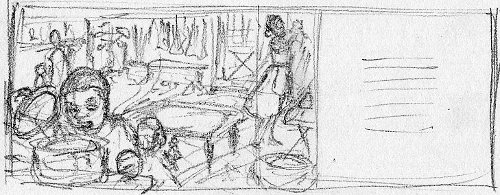
Lucky Beans tells the story of a young boy, Marshall Loman, living in the Great Depression. Given the tough economic times, money’s tight for the family:
“Beans! Again? Aw, Ma, can’t we ever have anything else?”
“Yes, it’s beans again, and we’re lucky to have them. So get washed on the double and then set the table.”
Marshall didn’t feel so lucky. The elbows of his jacket were worn almost all the way through. Dad had been out of work for months, and there was no money. The house was crowded since Aunt Minnie and Uncle Matt moved in. Now Marshall had to share a room with his little brother and sister, Tommy and Patsy.
And he was starting to hate beans.
Marshall decides to enter a contest hosted by Kaplan’s Furniture Store: Guess how many beans are in a jar displayed in the window, and win a brand-new sewing machine. This machine is one that his mother’s had her eye on for a long while. After confirming that the competition was open to all races (“They won’t let your mama win,” a lady tells Marshall one day. “Only white ladies can win contests”), the whole family uses estimation, which Marshall had been studying in school, to make their guess. They end up being off only by thirteen beans (their math and mad estimation and multiplication skills having been explained thoroughly — but not in a dull manner — by the author). And the machine actually brings about more money for the family, more sewing for the boy’s mother and delivery work at the store for his father. An endnote of sorts elaborates a bit on the Great Depression.
“Children will appreciate the story’s humor and happy ending,” writes School Library Journal. “Lucky Beans can be used across the curriculum to educate while it entertains. Ideal for classrooms and school libraries, it’s also a strong choice for public libraries.” Nicole’s illustrations are warm and expressive. She brings great affection to her depiction of the family. Here she is to share some more art and say a bit about the book:
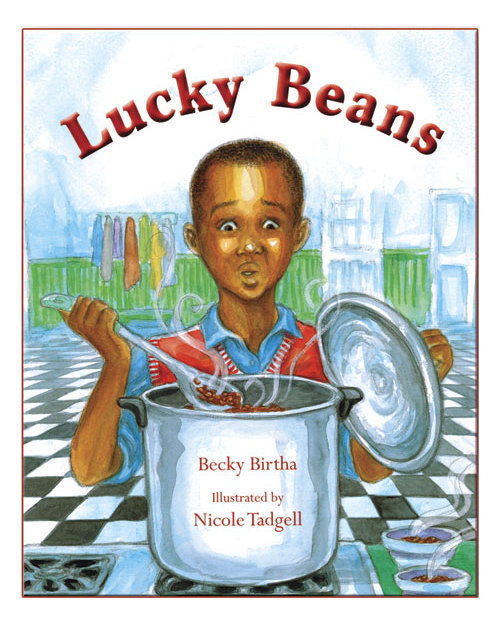

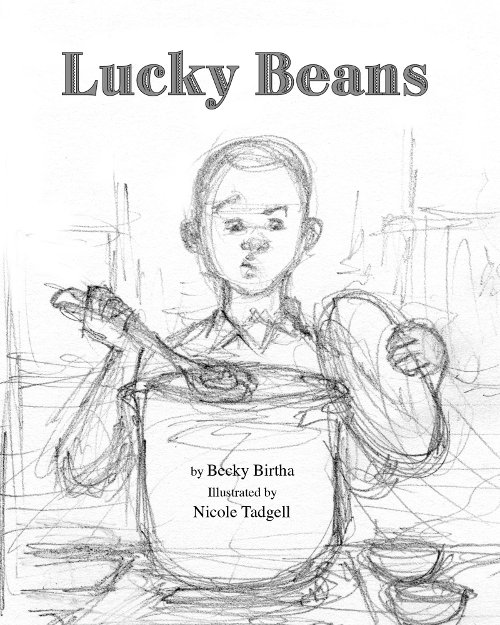
“Since I was little, I’ve always wanted to do a historical book — well, let’s face it…meaning, I’d get to draw waving prairie grass and sunbonnets, because I was such a Laura Ingalls Wilder fan! But when Albert Whitman contacted me about doing a book that took place during the Depression, I still got all excited. My Dad grew up in a 1920s-style bungalow in Detroit, so I based the interior scenes from memory, as well as from dozens of research photos. Research! I always do lots of research, and this one took a lot more than I’ve done before with the possible exception of Fatuma’s New Cloth. My older sister is very detail-oriented, so I ran a lot of things by her, as well as my history-loving husband. My in-laws (born in 1928 and 1933) helped quite a bit, too.

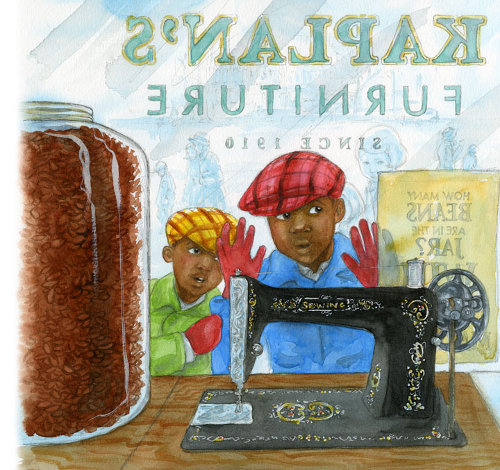
I wanted to stretch artistically, as always. Well, it’s always more of a ‘how can I make this book even better than my last one!’ with me. So, with this book I made a conscious effort to make ‘foreground/middle-ground/background’ distinct. There is a lot of perspective as well — not my strong point, but I think I did pretty well. Thanks to the Worcester Historical Museum’s collection of photographs, I had great references for street scenes, crowds, automobiles, and stores. The furniture store was the hardest part. During the Depression, there wasn’t much call for new furniture!
Some tidbits readers may find of interest:
Just because the story takes place during the Depression didn’t mean the book had to be depressing! So, I made the clothing colors a bit brighter and showed the world as I think kids are meant to see it — a positive, loving place to learn and grow.
We had some interesting choices to make regarding beans. Navy beans would have been more likely used at the time, but they are very small and white — not navy. Kidney beans are larger and a lovely red color. So, once that was decided, I chose the jewel-tone green to complement.
My favorite picture is the one of Ma standing in front of the store:
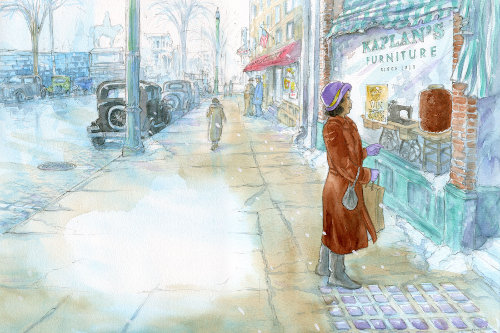
Much of the scene is based on one of the photos from the historical museum. Interestingly, I also happen to work on main street in Worcester, so this area is very familiar. It was really cool to walk down the street, holding the antique photos and looking to see how much has changed — and how much stayed the same…
…Thanks again for inviting me to participate in all things impossible!“

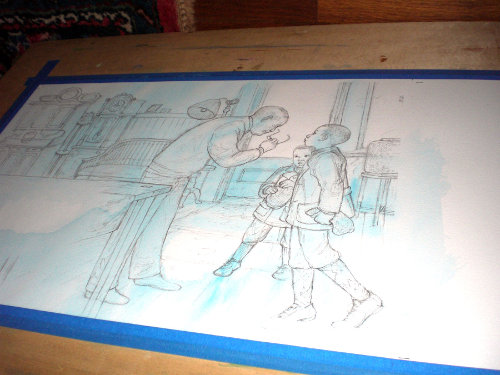
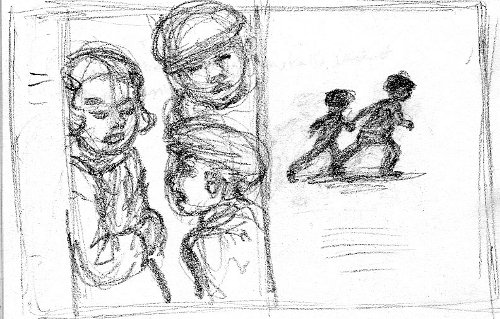
And thanks to Nicole for stopping by and sharing her art from this story of one family’s wits and warmth.
LUCKY BEANS. Text copyright © 2010 Becky Birtha. Illustrations copyright © 2010 Nicole Tadgell. Published by Albert Whitman & Company, Morton Grove, Illinois. All images used with permission of the illustrator.
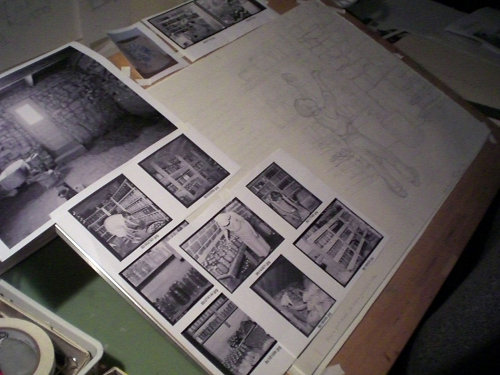
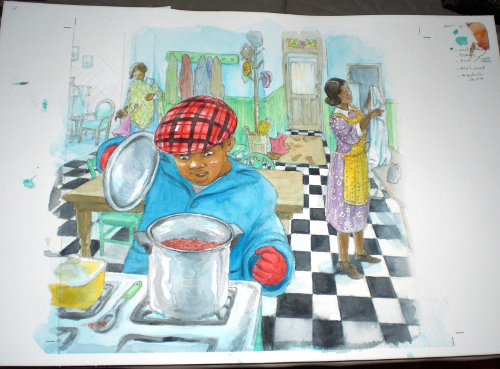
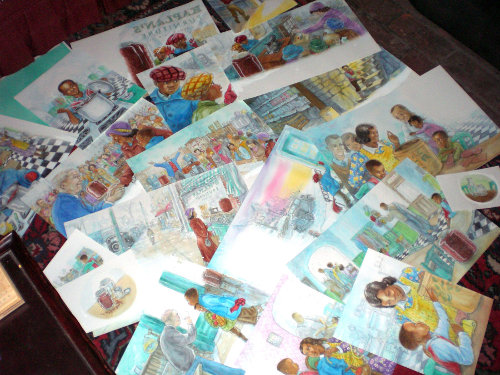

This is WONDERFUL!!!!!
This story is all kinds of awesome — a family getting along on little, and being grateful, a family exceeding expectations of others by using education — and really cute facial expressions. This is a great looking book.
This book looks lovely! I love the checkered floor in the kitchen — same as mine :). Mmmmm, beans.
Yuuuummmmm….beeaaannnnnsssss…..can’t wait to read this!
Wonderful, expressive illustrations capturing the era beautifully with rich color yet washy, dreamy edges. I love the fact that the author included some non-fiction mathematical knowledge along with the narrative fiction. I can’t wait to buy this book.
Wow, Nicole’s work just gets stronger every book! Such great drawing and dreamy watercolor.
Thank you, everyone!!
[…] Excerpt originally appeared on Seven Impossible Things. Here’s the link: http://blaine.org/sevenimpossiblethings/?p=1898 […]
[…] plenty about her on the Internet–at publishers’ websites, for instance, and other blogs–she doesn’t appear to have a real website. Links to the right of the page about her […]